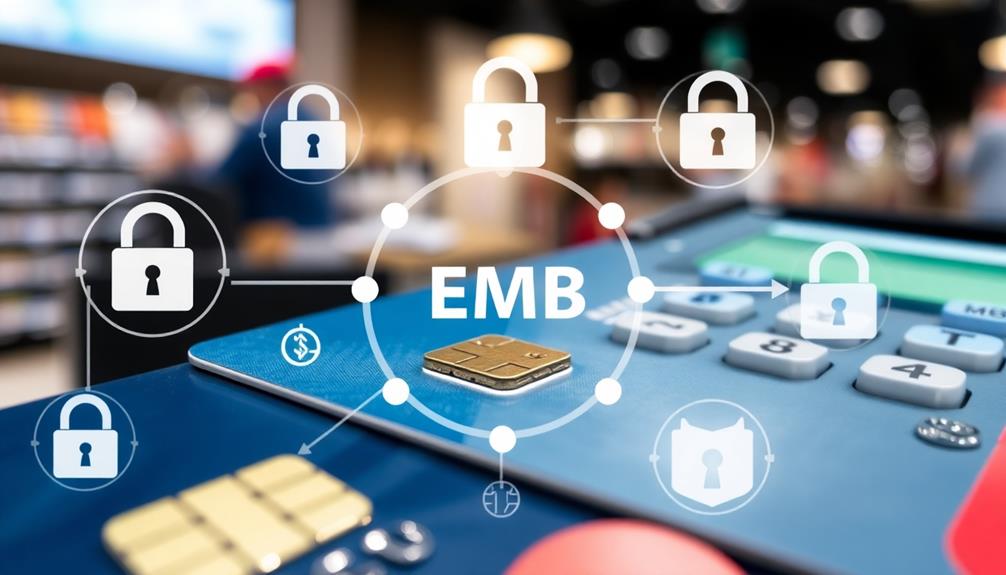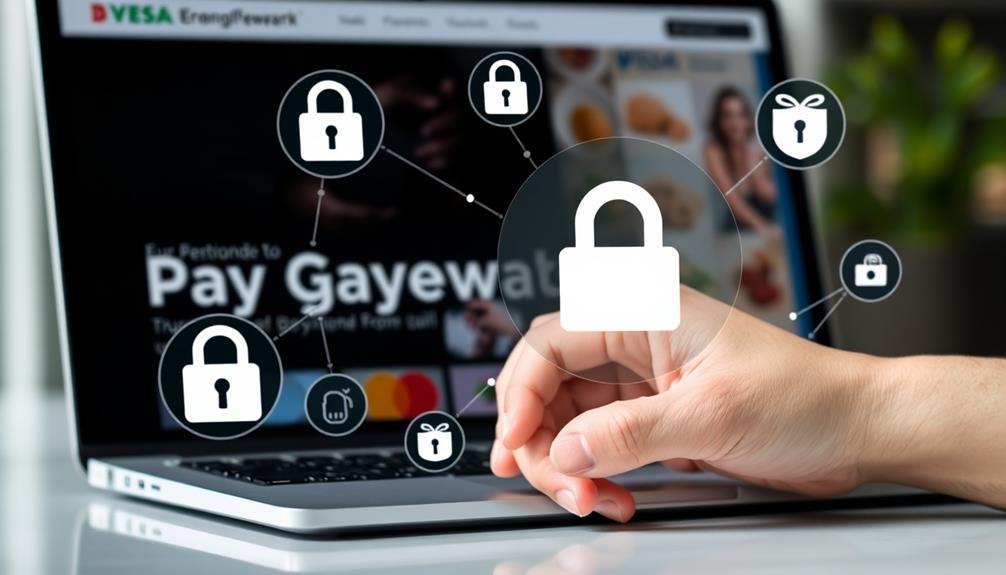Fraudsters sneak into authorization flows mainly by stealing session cookies or tokens through methods like session hijacking or phishing. They intercept unsecured data, exploit weak session management, or compromise stored tokens to impersonate users. Common vulnerabilities include unencrypted cookies, missing HttpOnly or Secure flags, or long-lived tokens. Protecting your system with encryption, secure protocols, and prompt session expiration can block these threats. Keep exploring to uncover deeper insights into how these breaches happen and how to prevent them.
Key Takeaways
- Fraudsters exploit session hijacking by intercepting session cookies via insecure networks or malware.
- Token theft occurs through phishing or malware, allowing impersonation during authorization flows.
- Insecure cookie attributes (lack of HttpOnly or Secure flags) increase vulnerability to theft.
- Long-lived or improperly stored tokens can be stolen and misused by attackers.
- Weak verification steps or insufficient multi-factor authentication provide entry points for fraudsters.

Have you ever wondered how online transactions stay secure while still allowing quick access? It’s a delicate balance, and fraudsters are constantly trying to tip the scales in their favor. When you log into your bank account or an e-commerce site, a complex authorization flow kicks in to verify your identity and keep your data safe. But this process isn’t foolproof — cybercriminals are always searching for vulnerabilities. Two common tactics they use are session hijacking and token theft, which can undermine the entire security framework if not properly guarded against.
Session hijacking occurs when fraudsters intercept or steal your active session, gaining unauthorized access without needing your login credentials again. Imagine you’re shopping online, and your session is active. If a hacker manages to hijack it, they can impersonate you, view sensitive information, or even make fraudulent transactions. This often happens through methods like intercepting session cookies — small pieces of data stored in your browser that verify your identity during a session. If a hacker can steal these cookies, they can hijack your session, bypassing login requirements altogether. That’s why securing session cookies with encryption and setting appropriate flags, like HttpOnly and Secure, is essential. These measures make it considerably harder for cybercriminals to access session data through malicious scripts or network eavesdropping. Implementing cookie security best practices helps safeguard these crucial data pieces from theft. Additionally, employing secure communication protocols such as HTTPS can prevent eavesdroppers from intercepting sensitive data in transit. Using regular session timeout policies can also limit the window of opportunity for hijackers to exploit active sessions.
Token theft is another major risk during authorization flows. When you authenticate via tokens—such as OAuth tokens or JWTs—these tokens serve as proof of your identity. If a hacker manages to steal a token, they can impersonate you without needing your password. Token theft often occurs through phishing attacks, malware, or insecure storage. For example, if your device is compromised or if tokens are stored improperly, hackers can extract them and use them to authenticate as you. Once they have the token, they can access your account or perform actions on your behalf, often with minimal suspicion. This is why it’s essential to implement strong security measures, like encrypting tokens at rest, validating token integrity, and setting short expiration times to limit the window of opportunity for misuse. Moreover, utilizing multi-factor authentication adds an extra layer of protection that can prevent unauthorized access even if tokens are stolen.
Understanding how these attack vectors operate is fundamental for anyone involved in designing or using secure systems. Developers must incorporate tight safeguards—such as secure cookie attributes, multi-factor authentication, and continuous monitoring—to prevent session hijacking and token theft. For users, staying vigilant about phishing attempts, avoiding insecure Wi-Fi networks, and keeping software up-to-date can go a long way. Ultimately, a layered approach combining technical defenses and user awareness helps maintain the integrity of the authorization process. By grasping the methods fraudsters use to sneak in, you can better protect yourself and the systems you rely on daily.
Frequently Asked Questions
How Can Businesses Detect Unauthorized Access During Authorization?
You can detect unauthorized access during authorization by monitoring behavioral flags and session anomalies. Look for unusual login times, IP addresses, or device changes that don’t match typical user behavior. Implement real-time alerts for suspicious activity and use multi-factor authentication to add layers of security. Regularly review access logs for anomalies, and educate users about security best practices to prevent unauthorized access before it occurs.
What Are the Latest Techniques Fraudsters Use to Bypass Security?
It’s ironic how fraudsters masterfully bypass security by exploiting your trust. They use credential stuffing to flood your login page with stolen credentials, slipping past defenses. Social engineering tricks you into revealing sensitive info, making unauthorized access seem harmless. These latest techniques underline the importance of multi-factor authentication and vigilant monitoring. Stay alert, because in this game, your security measures need to be smarter than their deception tactics.
How Effective Are Multi-Factor Authentication Methods?
You might wonder how effective multi-factor authentication methods are. They substantially boost security by combining something you know, have, or are. Biometric verification adds a strong layer, making it harder for fraudsters to bypass. Behavioral analytics further enhance protection by monitoring user patterns for suspicious activity. When used together, these techniques create a robust defense, making unauthorized access much more difficult and reducing the risk of fraud.
What Role Does User Behavior Analysis Play in Preventing Fraud?
User behavior analysis helps you prevent fraud by examining behavior patterns and spotting anomalies. When you monitor how users interact with your system, you can identify unusual actions that might indicate fraudulent activity. By actively detecting these anomalies early, you reduce the risk of unauthorized access. This proactive approach keeps your platform safer, as you can respond quickly to suspicious behavior and protect your users and assets effectively.
How Can Organizations Quickly Respond to Detected Security Breaches?
Your response to security breaches must be lightning-fast, like a bolt of lightning striking the sky. You can do this by implementing robust access control and risk management strategies that detect anomalies instantly. When you identify a breach, immediately isolate affected systems, revoke compromised credentials, and escalate the issue. Regularly update your incident response plan, train your team, and leverage automation tools to guarantee you’re always prepared to act swiftly and minimize damage.
Conclusion
So, next time you think your fancy authorization flow is foolproof, remember—fraudsters are just waiting for you to slip up. With a little cunning, they’ll find their way in while you celebrate your “secure” system. Maybe it’s time to stop trusting magic passwords and start thinking like a hacker. After all, if you’re not watching your back, someone’s already planning to sneak in — and they’re probably laughing at your complacency.











